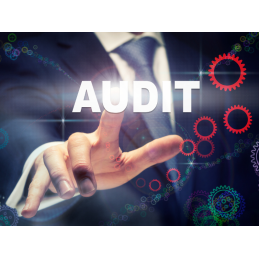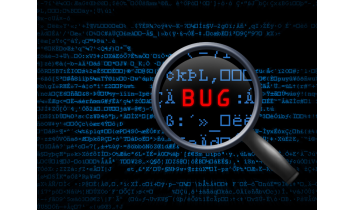
Software Audit
Source code/binary audit: detecting software bugs or flaws
A software audit can be used for a variety of purposes: improving code quality, preparing software for certification, checking compliance with coding rules, detecting bugs or vulnerabilities, etc.
The source code file audit, as its name suggests, uses the software application's source files to analyze either the program's syntax (e.g. coding rules) or semantics (bugs).
The source code file audit, as its name suggests, uses the software application's source files to analyze either the program's syntax (e.g. coding rules) or semantics (bugs).
Audit of source files
Audit of code allows you to scan your software and detect bugs that could affect its operation throughout its lifetime. The aim is to identify errors or coding methods that could lead to system breakdowns, unexpected behavior or cybersecurity flaws.
Based on Advanced Static Analysis, this code audit is an analysis method that has proven its effectiveness in detecting common programming faults. It makes it possible to analyze an application in its entirety, and to eliminate the most costly flaws, which are generally very difficult to detect by manual analysis. As the code is never executed in a static analysis, it can be used at any point in the development cycle, and ideally complements other testing methodologies, such as conventional dynamic testing.
For example, here is a non-exhaustive list of the types of detections enabled by advanced static analysis:
Based on Advanced Static Analysis, this code audit is an analysis method that has proven its effectiveness in detecting common programming faults. It makes it possible to analyze an application in its entirety, and to eliminate the most costly flaws, which are generally very difficult to detect by manual analysis. As the code is never executed in a static analysis, it can be used at any point in the development cycle, and ideally complements other testing methodologies, such as conventional dynamic testing.
For example, here is a non-exhaustive list of the types of detections enabled by advanced static analysis:
- Command injection / SQL
- Tainted values (analysis of data flow, in particular external data, and its propagation, to judge its potential danger - cybersecurity)
- Buffer overrun (buffer overrun / underrun)
- Division by zero
- Null pointer dereference
- Memory leaks
- Stack overflow
- Casts problems
- Uninitialized variables / pointers
- Double release / file closure / socket / mutex ...
- Thread competition: Data Race, Dead locks, famine ...
- ...
Audit binary or executable files
In a digital world where software is ubiquitous and increasingly complex, cybersecurity has become essential. Binary Composition Analysis (BCA), which provides an exhaustive inventory of the software components (SBOMs) that make up an application, is a crucial element of this security.
What are the benefits of this analysis?
This analysis provides :
What are the benefits of this analysis?
This analysis provides :
- An exhaustive inventory (SBOM) of software components, both open source and third-party, used in an application.
- Rapid identification of N-day and zero-day vulnerabilities
- Visibility into dependencies
- A response to the regulatory requirements of the CRA, NIS2 and DORA
- Easy-to-integrate reports in CycloneDX, SPDX or CSV format
Drawing on its long-standing expertise in the tools and development of mission-critical real-time applications, ISIT has set up an on-demand code auditing service for customers who do not have the tools in their design office or the resources to carry them out, but who nevertheless wish to ensure the quality level of their software. This is particularly true with the development of connected systems, where flaws in the code often result in dangerous vulnerabilities.
Software audits: Methods & Procedures
Our software audits cover both source code analysis (C, C++, Java and C#) and binary code analysis (even in the absence of source files). They are based on ad hoc tools, qualified and recognized for their efficiency in this field.
These audits are carried out in strict compliance with confidentiality rules and within a secure framework, in line with best practices in data protection.
Software audit: Results
At the end of the analysis, a detailed report is generated, indicating all detections (Safety, Security).
In addition, our AQL experts can carry out a detailed review of these detections to provide you with concrete recommendations for their correction.
Beyond this analysis, our consultants are able to support and assist you throughout your development to ensure the quality and reliability of your software.
Software audits: Methods & Procedures
Our software audits cover both source code analysis (C, C++, Java and C#) and binary code analysis (even in the absence of source files). They are based on ad hoc tools, qualified and recognized for their efficiency in this field.
These audits are carried out in strict compliance with confidentiality rules and within a secure framework, in line with best practices in data protection.
Software audit: Results
At the end of the analysis, a detailed report is generated, indicating all detections (Safety, Security).
In addition, our AQL experts can carry out a detailed review of these detections to provide you with concrete recommendations for their correction.
Beyond this analysis, our consultants are able to support and assist you throughout your development to ensure the quality and reliability of your software.



